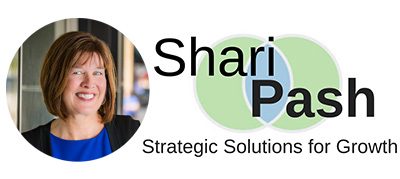How often have you glanced at the clock and realized your whole day is gone, but you don’t have much to show for it? You aren’t alone! It’s stressful to see that so many items on your to-do list are still present, despite your best efforts. All of us have days (weeks, too!) of feeling like we’re muddling through our workload and barely making progress. Luckily, there’s a tool that allows you to get more done, even with less time and fewer resources: time blocking. Time blocking is a productivity technique that allows you to plan and organize your time between the activities in your day. Utilizing time blocking and the recommended tactics below will help you meet your sales, membership, and strategic goals more efficiently, and help make your to do list, done!
Analyze
Before starting a time blocking schedule, do a self-evaluation on your own work. What takes you the longest to do? What are the tasks that take you minimal time? Be honest with yourself and ask, are you giving yourself enough time to even meet your member or sales goals or assignments you have? There’s a term about overoptimism for the time we need to complete a task (a planning fallacy). Conduct a serious reality check on the time you actually need. Write down what you plan to accomplish, and the realistic number of hours needed for each individual project. (Recruitment, retention, new client sales, sponsorship, past dues, admin, etc.)
Prioritize
Give yourself the benefit of a plan that’s in order of priorities! What has higher levels of urgency? Are you doing the right things, at the right time, on the right days? Having a plan and working that plan is key. Remember for your sales, recruitment, and engagement work, use your member or client’s best window of time. List everything out and decide an order of priority. Another daily task to plan for is your reactive tasks: answering calls, emails, and more (this is especially important to do if your work requires quick response times).
Schedule
With your analysis and priorities in order, you can now work on your schedule. Begin blocking off time for single tasks, placing them in the hours you prefer.  If you’re most productive in the morning, set your highest priority tasks then. Your weeks will change, but you can find consistency in scheduling certain repeated events, so you know when they occur and when you’ll complete them. Create recurring events on your calendar to set a consistent plan.
Color blocking is a clever tool for your calendar as well. You can put items with upcoming deadlines in colors that attract your attention, while easier items can be in another shade. Many people appreciate the traffic light system where tasks go upwards in color and therefore importance: red grabs your attention! Red is often your member or client time.
As you begin scheduling, don’t neglect breaks. Put in your lunch, coffee, a ten-minute breather, whatever you truly need to tackle your day. You can also begin a self-imposed policy of an overflow day or afternoon, where you block off that time to work on outstanding and unfinished goals.
Adjust and Adapt
To err is human, and to have a few errors in your week is simply unavoidable. Meetings change, new projects appear, and your personal life gets hectic. Flexibility in your time blocking is vital. Be willing to change the order of your blocks and have blocks of free time that can be used for unexpected interruptions or simply lost time. Mental and physical wellness is just as important to plan. Be kind to yourself!
Focus on your path to productivity by having a time management strategy that’s achievable and adaptable for your life. Whatever your role, time blocking is meant to be a beneficial and transformative tool making your workload change from insurmountable to attainable!
If you would like to schedule a virtual training on using time blocking as a strategy for your role and work, click to connect with Shari.
Shari Pash is the founder of Strategic Solutions for Growth, a training company headquartered in Grand Rapids, MI. Shari works with Chambers of Commerce, non-profit organizations, and associations across the U.S. and Canada. Connect with Shari to learn more about how she can help your organization.





